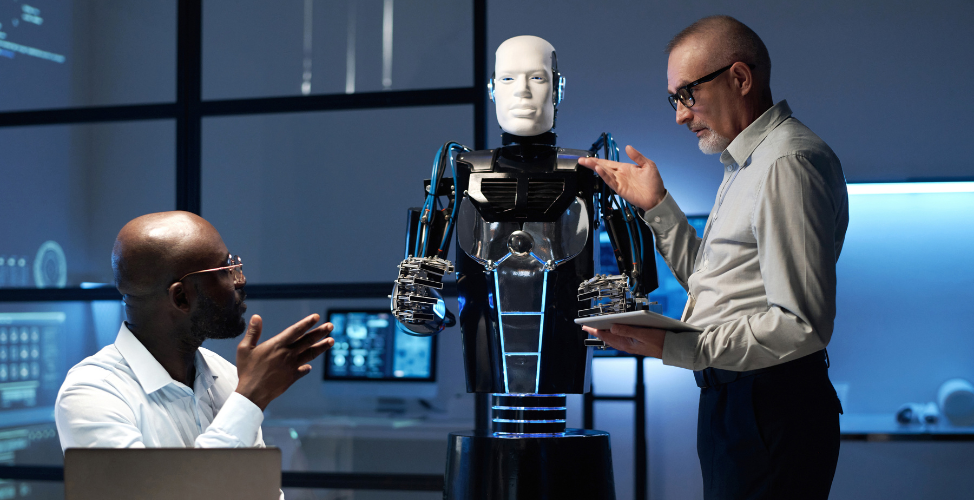- Home
- Blog
- Experience
- Closing the gap in customer experience delivery
Closing the gap in customer experience delivery
While marketers are living in their own bubble of delivering great customer expectations to customers, customers beg to differ.
According to the “Gaps in Customer Experience” Report, marketers believe that they are doing an excellent/good job of implementing new customer engagement technologies (86%) and keeping up with changing customer expectations (86%). When asked about the company, an overwhelming majority (92%) say their ability to deliver an exceptional customer experience is excellent/good.

But are customers living inside the same bubble? When asked to think of all the brands they interact with regularly, less than 80% of consumers rate these engagements as excellent/good. The results are also different in terms of demographic, as Gen Z and Millennials are among the easiest customers to indulge with 27% of both groups believing they receive great customer experiences. For the older generations such as Boomers and Seniors, only 12% and 10% of them respectively label “excellent” to experience they have with brands.
Customer’s expectations towards experiences are changing
While marketers are living in their own bubble of delivering great customer expectations to customers, customers beg to differ.
Microsoft has found that 54% of customers have higher expectations for customer service today compared to one year ago. The changes happen gradually over time for several reasons:
First, both B2B and B2C customers are becoming younger. A large number of them are Millennials and GenZs who live, eat, and breathe digital, making them demanding seamless and effortless customer service experiences.
Second, as customers now have higher demand, the power they uphold expands, too. Having the ultimate tool – the internet on hand, they can find alternatives for almost any company should they feel unhappy with the brand. What can make them unhappy, you may ask – the answer is endless. It could be that you are not providing enough detail about the product or service on your website, or your promotion campaign is totally irrelevant, or it could be as simple as your sales reps asking them for address information while they have purchased from you multiple times.
Third, not just the customers, but the landscape is changing too. This is reflected in the cheaper price of digital experience and more available technology everywhere. With the pandemic seemingly coming to an end, our social, political, and economic activities are changing day after day in response to emerging events.
Amid such chaos, there is one thing for sure: If a company invests in digital technology solutions, they have a competitive advantage over their rivals. That’s why we need to detect any experience gap and resolve it as soon as possible.
How are gaps in experience delivery created?
Businesses don’t acknowledge the gap
While businesses want to own the experience game, there’s a high chance that they are misinterpreting what the customers are signaling. According to Salesforce, 91% of customers won’t complain if they feel unhappy with a company, they will just leave. Then, can the last 10% go wrong? It can, sadly.
This situation happened in one of the CX books called “The excellent CX” in which an airport wanted to measure the level of satisfaction through surveys hanging around the terminals. The author was walking up one survey form to take a closer look and immediately, a woman working in that area approached him and asked him not to fill out any form (she didn’t know if he was going to complain or compliment the service he had received), because she and all the workers may get into trouble if he reported any slightly negative feedbacks. He assured the woman that he was just studying the form and if she did nothing wrong, she shouldn’t be concerned at all.
After 10 minutes of ineffective persuasion, the woman walked away just to send a younger worker to ask him the same thing.
Through this, the author points out that the result of customer service one company receives may or may not be the correct response from customers – it can be the result of false measurement systems, tacky processes or defensive workers in customer service.
So while it’s vital to conduct surveys of your customers, collect feedback on online and offline channels, the key thing to do is to have a transparent and efficient feedback process so that you can immediately identify where your company is failing to meet expectations.
Businesses don’t understand who are their customers
In worse cases, businesses don’t acknowledge the gap because they identify the wrong customers and process the business and strategy based on this wrong feedback. Without the correct picture of the targeted customers, it’s almost impossible to align the experiences a brand provides with what its customers expect.
The pandemic has worsened the modern buyer’s journey, making it messier than ever for marketers to be in control of all touchpoints with customers. With several micro-moments that can cause the buyer to take a step closer to purchase or to derail and result in a lost customer, it is important now more than ever to know who your customers are, what they expect, and what you can do to ensure each interaction is smooth and offers value.
Businesses don’t have an omnichannel strategy
For those having the most precise buyer personas, the faults may lie in their operation. With the modern customers who want to be empowered in every single contact with the brand – how they interact, when they initiate the contact, what content should the brands show them, an omnichannel strategy is essential.
Consumers expect companies to adapt to the new dynamic and offer a wide range of channels with a seamless experience as they transition from one channel to the next. The challenge for brands is to consistently raise the bar as consumer expectations rise every year.
See what experts have to say about the 2021 Omnichannel strategy in Retail.
Businesses don’t leverage data
But what if I have the right mindset, the right customer personas, and strategy? What else can go wrong? Well, now it’s the “source” turn.
Not every company has an efficient data infrastructure that supports omnichannel communication. With the tacky legacy systems, outdated CRM, or disparate technologies in different departments, the leverage of data can be a nightmare. It’s 2022, the majority of customer interactions occur on the digital channels. Therefore, a robust data infrastructure to help gather, integrate, and draw actionable insights from your customer data will save businesses a lot of time, effort and money on the wrong customer experience tactic.
Businesses don’t have the suitable technology capabilities to adapt to consumer needs quickly
The data equation above drives us to the very last and arguably the hardest issues in terms of experience gap. While we all know that collecting customer data is vital, the question about the right technology to process that data and draw insights in a time frame where they are actionable is tricky.
See how SmartOSC analyzed ASUS’s business model and leverage the customer’s experiences through personalized content.
How to close the experience gap?
In terms of culture
In the journey towards great customer expectations, company culture is usually the largest and most common barrier brands face in the earliest phases. These “culture barriers” can take a multitude of forms. For example, a company culture where each department or product line is an autonomous entity can and often does result in disconnects in the customer journey and a poor experience. Another example is when different parts of the company (e.g., regions) purchase different technologies to accomplish the same outcome and these technologies are not integrated.
So, the first place to start is to examine the company culture and whether there are barriers that are impacting the customer experience. It’s common for companies to pretend to be customers and interact with all existing touchpoints to see how they turn out. Brands should have a few people do this, compare notes, and see where at least some of the barriers are. This will often raise cultural issues that won’t necessarily be obvious, and you can then make a plan to address them.
In terms of customer needs
Customer expectations and customer needs are two different facets of customer engagement. A customer’s need is the underlying reason why they engage with a company. Meanwhile, to understand customer expectations, companies must ask the customer and then ask again a little bit later to see how well they meet the customer’s expectations. The most common metrics to be used as a measure of customer experience solutions are Net Promoter Scores (NPS) and Customer Satisfaction (CSAT) scores. Read about them HERE.
In terms of technology
Too often this is the first thing that comes to mind when we think about solving the customer expectation problem. Three key components of maximizing the application of appropriate technology are:
- The correct customer data
- Focusing on omnichannel and cross-channel experiences
- Optimizing for self-service
As mentioned above, the right customer data and customer feedback about the experience is the directional input that companies are striving for but simply miss. While gathering offline feedback depends tremendously on operational and human elements, the right technology tool can transparently and effectively harvest valuable insights to optimize the cross-channel customer experience. As customers switch from channel to channel and as new channels become available, the ability to manage that and provide a consistent integrated experience is an important part of any customer experience.
See how technology leverages customer insights and enables effective strategy for COURTS and Ricoh, and don’t forget to follow us for more information on CX!


